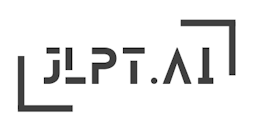

N5
音読み:dai
訓読み:oo, ookii
ダイdai
おおoo
おお.きいookii
Big, large, great
Imagine a person standing with their arms spread open wide, symbolizing something big or large. This visual representation can help in remembering the meaning of the kanji.
The kanji '大' is a fundamental character frequently encountered in JLPT materials, especially at the N5 and N4 levels. Its various readings and meanings make it a recurring feature in both kanji and reading comprehension sections of the exam.
彼は大学生です。
He is a college student.
かれはだいがくせいです。
kare wa daigakusei desu.
大きな声で話す。
Speak in a loud voice.
おおきなこえではなす。
ookina koe de hanasu.
彼女の夢は大物になることです。
Her dream is to become a big shot.
かのじょのゆめはおおものになることです。
kanojo no yume wa oomono ni naru koto desu.